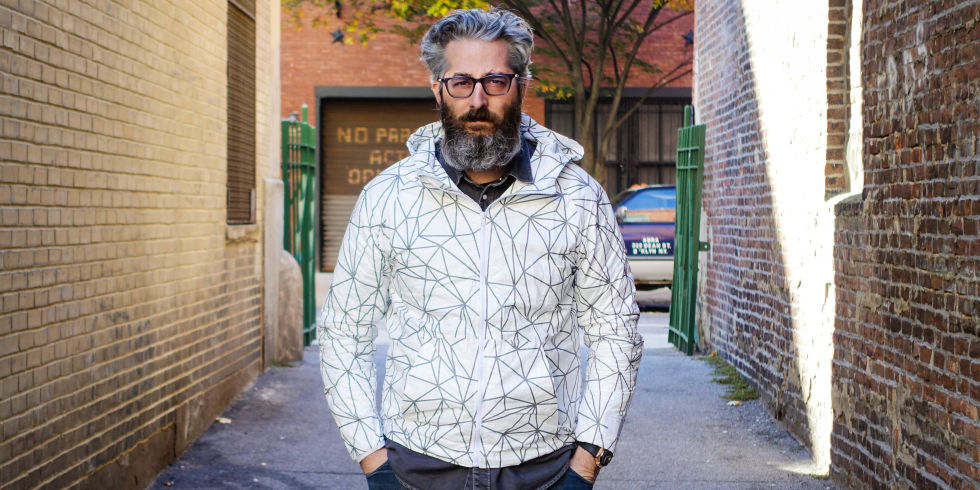Why Everyone Is a Maker Now

What is a maker, anyway? Before answering that question, I need to rewind a bit and look at the history of the maker movement (and yes, it is a movement, a cultural and economic force).
The definition of “maker” has changed radically in the last ten years, and it’s about to morph again in a very big way. The reason for the shifts is common in history: people, lots of them, getting their hands on new technology and tools. After World War II, when an analog version of today’s maker movement took root, a well-equipped home workshop would have had a grinding wheel, a drill press, a great set of wrenches, and maybe even a table saw. Anyone who used those tools to fix the family car or build a picnic table or go-kart was a maker, and so were the hot rodders and Whole Earth Catalog devotees who followed in the 1970s and ’80s. Being a maker back then—and even as recently as a decade ago—was primarily thought of as a hobby without prospects of making it your full-time gig.
Today, the maker’s arsenal is digitized and extensive, and likely to be found in a shared work space. The core motivations are the same. Be creative and self-reliant. Feel the satisfaction of turning an idea into an object. It’s one thing if you do it alone, in your shop, but another thing entirely if you do it while surrounded by other makers. The communal experience of sharing thoughts and know-how, and having access to sophisticated prototyping and manufacturing tools . . . Those are the ingredients of a mind-blowing moment for a maker. Wow, I’m not crazy. There are lots of people who think the way I do, who believe that others might like the things I make and even pay for them.
So, part of the answer to the question is that making today is two clicks away from becoming an entrepreneur. It’s about taking the steps from self-reliance to self-employment. The path between the two can be rough. When I launched Maker-Bot, in 2009, I learned that starting a business requires major guts, perseverance, and stamina. It’s a little easier now, for reasons I’ll get into. But a fairly small percentage of people become makers with the sole intention of turning their passion into a paycheck. Most of us see a higher purpose in creating things, regardless of whether we also see dollar signs. My success hasn’t come without some measure of psychic discomfort. It feels a bit odd to have merged my love of making with my livelihood. On the one hand, it’s been my mission to empower the next generation with MakerBots. I have a hippie heart that wants everything to be free. On the other hand, I had to let go of being a purist to build MakerBot into a company with significant reach. It was the only way for me to turn my dream of mass-distributed manufacturing into a reality.
In 2013 the 3D-manufacturing giant Stratasys acquired MakerBot. A year later I moved on to my current project, Bold Machines, an innovation workshop that’s a collaboration among Stratasys, MakerBot, and Solidscape, another 3D-printing firm. I’m back to my roots of making things, using 3D printers from those companies to empower entrepreneurs, makers, and artists. In a way I’ve come full circle. Bold Machines is located in the original Brooklyn headquarters of MakerBot. I’m on familiar turf with a mission that has evolved but rests on the same core principle.
I was the kid who liked taking things apart and putting them back together. My family ran a software company, and in the early 1980s my heroes were the hackers and programmers who hung around the house trying to create colors and music with an Apple II Plus. Then I got into puppetry, working in Jim Henson’s Creature Shop, where I also learned about robotics. Next, I became a teacher, helping children learn different ways to express themselves. In 2004 I broke into the maker movement, when nobody really knew what it was. The definition of maker was still narrow and tethered to the past—to most it meant being a woodworker or a bike repairman. But I shot tutorial videos about makers and the things they make, and posted them on the Internet every week. Since then I’ve lived the extreme making lifestyle. With MakerBot I went for the holy grail of makers, to make things that make things.
I’ve dedicated my life to empowering creative people. The philosophical foundation of MakerBot is the same as Bold Machines’. It’s a workshop where you can make anything—a movie with 3D-printed characters, the prototype of a medical instrument, or lighting fixtures that open like a flower. We look for authentic innovators and artists and designers, and we help them go from prototype to finished product, whether it’s the basis of a startup or a work of art. We compress into months or even weeks a process that could take years for an individual to complete. This acceleration, the ability to ramp up from “just” making something to refining an idea or product so that it can reach its potential, is the primary difference between what it meant to be a maker ten years ago, and what it means to be one now.
Another difference is the greater number of tools at your disposal. Makerspaces routinely offer the use of CNC (computer-controlled) routers, 3D-design software and printers, laser cutters, metalworking equipment, and much more. You’ve got Raspberry Pi, a computer in a tiny format that you can use to control physical stuff, whether you’re making a computer game or building systems to secure your home or water your garden. The world of making has opened up with the democratization of tools, which was my mission in bringing 3D printers to the masses. If you are a creative person, all your excuses for not making the products of your imagination are invalid. It used to be, “Yeah, I’m creative, but I don’t have the money.” Well, it’s affordable now. Or, “I don’t know anybody. I don’t have connections.” Well, join a forum online, or head to a meet-up or a makerspace, and you’ll be amazed at how many connections you can make.
Bottom line, the threshold to becoming a maker has shrunk, and we’re about to see a generational shift toward greater participation in the maker movement. More and more people have started taking their passion and investing in it in their spare time. I would say that anybody who reads Popular Mechanics is someone who has the potential to be a maker. The magazine reaches millions of people. Now, they may not be makers per se. But they’re open to the possibility that they could be the person they’re reading about, and because making things is easier today, it’s harder to ignore the lightning strikes of inspiration.
These are the makers-in-waiting. Or maybe they’re like I was before I started shooting those tutorial videos—makers who have yet to identify themselves as such. In any case, I think we’re on the verge of a mass realization that consumerism isn’t the monoculture. As evidence I would point to things like craft brewing and distilling, crowdfunded fashion by online retailers like Gustin, and the rapid rise of the sharing economy, for which companies like Uber are the standard-bearers. We can also look to Etsy for inspiration. Launched in 2005, the platform for makers to take baby steps into commerce now reportedly has 1.4 million sellers, 20 million buyers, $200 million in revenue (in 2014), and is headed for an IPO.
Etsy is regarded as a primary symbol of the long-tail economy. By using 3D printing or other personal-manufacturing tools, a maker can create a one-off or limited-run item, post it to etsy.com, and then scale up production to meet demand. Some items on Etsy are tchotchkes, the physical equivalent of cat photos on the Internet. But they may also lead to innovations, like a human prosthetic device that can be developed and sold for $300 instead of the existing industry standard of something like $50,000. The opportunity to explore the absurd—to make tchotchkes—gives makers the freedom to come up with a new product that may seem trivial but may also contain the seed of a breakthrough invention.
I’m eager for more people to embrace this bold new approach to innovation, manufacturing, and commerce. I’d love to see schools transform from institutions optimized to train kids to take tests into places that encourage risk-taking and teach skills that are useful in the workforce. The shop classes of my youth are nearly extinct, and there aren’t enough digital fabrication classes to take their place—and give students who want to make things the opportunity to explore. These are hard challenges, but they are the underpinnings of technological and social progress and also of the maker movement itself. Like any disruptive movement, some people might regard it as a fringe culture—until it becomes ubiquitous.
Popular Mechanics

PROFILE
Magazine
Since 1902, Popular Mechanics has been the authority on how your world works. We bring our audience the latest news on innovations and inventions across the automotive, DIY, science, technology, and outdoor spaces. We also serve our readers with the knowledge they need to get the most out of life, whether that’s how to change a tire, how to build a farmhouse table, how to find your lost phone, or how to hike the Appalachian Trail. Popular Mechanics is about wonder, about being curious about the world around you, and it’s about getting your hands dirty, too.
When it was founded, our magazine used the tagline “Written so you can understand it,” and today, we still follow that ethos.
Main Research Source
- Why Everyone Is a Maker Now(28/05/2015)
